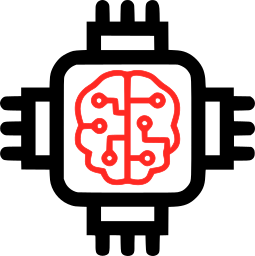Port RIOT to a Round Display & Evaluate an Interface for Health Monitoring
- Typ der Arbeit: Bachelorarbeit
- Status der Arbeit: reserviert
- Projekte: SArES
- Betreuer: Christopher Büchse
Before continuing please visit: General Process of a BA/MA Thesis
The technological advancements in display technology enable the manufacturing of round LCDs that are for example commonly found in household thermostats or Smart Watches. The prices have fallen significantly, making the displays available for low quantity projects common in research.
This thesis is meant to evaluate the usefulness of such a round display to show health data collected by the Space Patch, which is currently developed at the Smart Sensors Group.
Some examples for round displays are offered by Waveshare, which either only
have the LCD controller itself on the PCB or another built-in microcontroller
such as the Raspberry Pi RP2040 or the Espressif ESP32-S3.
They also feature additional peripheral devices such as an Inertial
Measurement Unit (IMU) to measure movement and Flash memory to store data.
Some but not all of the display variants feature an CST816S-compatible
Touch Display Controller.
The Smart Sensors Group uses the embedded operating system RIOT OS for their
research. RIOT OS already supports a similar LCD based on the
ST77xx controller family
which has a similar physical and command interface to the GC9A01 used on
the round Waveshare 1.28" LCDs. The commands are not the same though, so
the library has to be adapted.
The CST816S Touch Display Controller is already supported by RIOT OS.
RIOT OS also has support for the Raspberry Pi RP2040 or the Espressif ESP32-S3
microcontrollers, which makes the board support straight forward.
There is currently no support for the QST QMI8658 IMU, which means a driver
has to be created.
The scope of the thesis is three-fold:
1) Developing the hardware support for the Waveshare Display Module.
In the scope of a Bachelor's thesis, rudimentary drivers for display and IMU are sufficient while for a Master's thesis, a full driver integrated into RIOT's driver API are expected.
2) Creating a user interface that displays health information.
RIOT OS has support for the LVGL library, which makes the creation of user interfaces straight forward. Since not all of the displays have a touch interface, the built-in IMU should be used for navigation. The program should be able to detect a "shake" motion to the left or right to change the currently displayed contents. The Touch Display Controller might be able to be used as a fallback.
3) Conducting a user study that evaluates the ease of use of the user interface.
The user interface should be able to be used by an untrained person as well, therefore a study should be conducted that evaluates how intuitively the interface can be operated. This can be done with collegues, friends and family. Part of the study can also be the different operation modes with and without touch screen and how the untrained operators react to it.
This thesis can also be converted to a Project Thesis, then the user study can be omitted.


